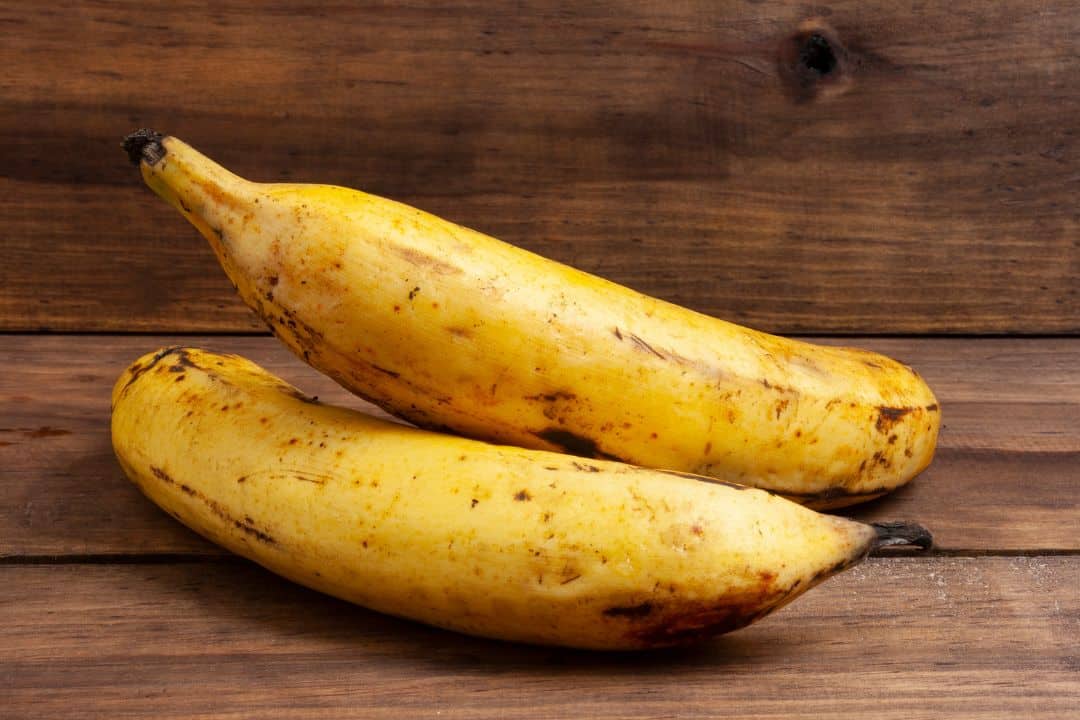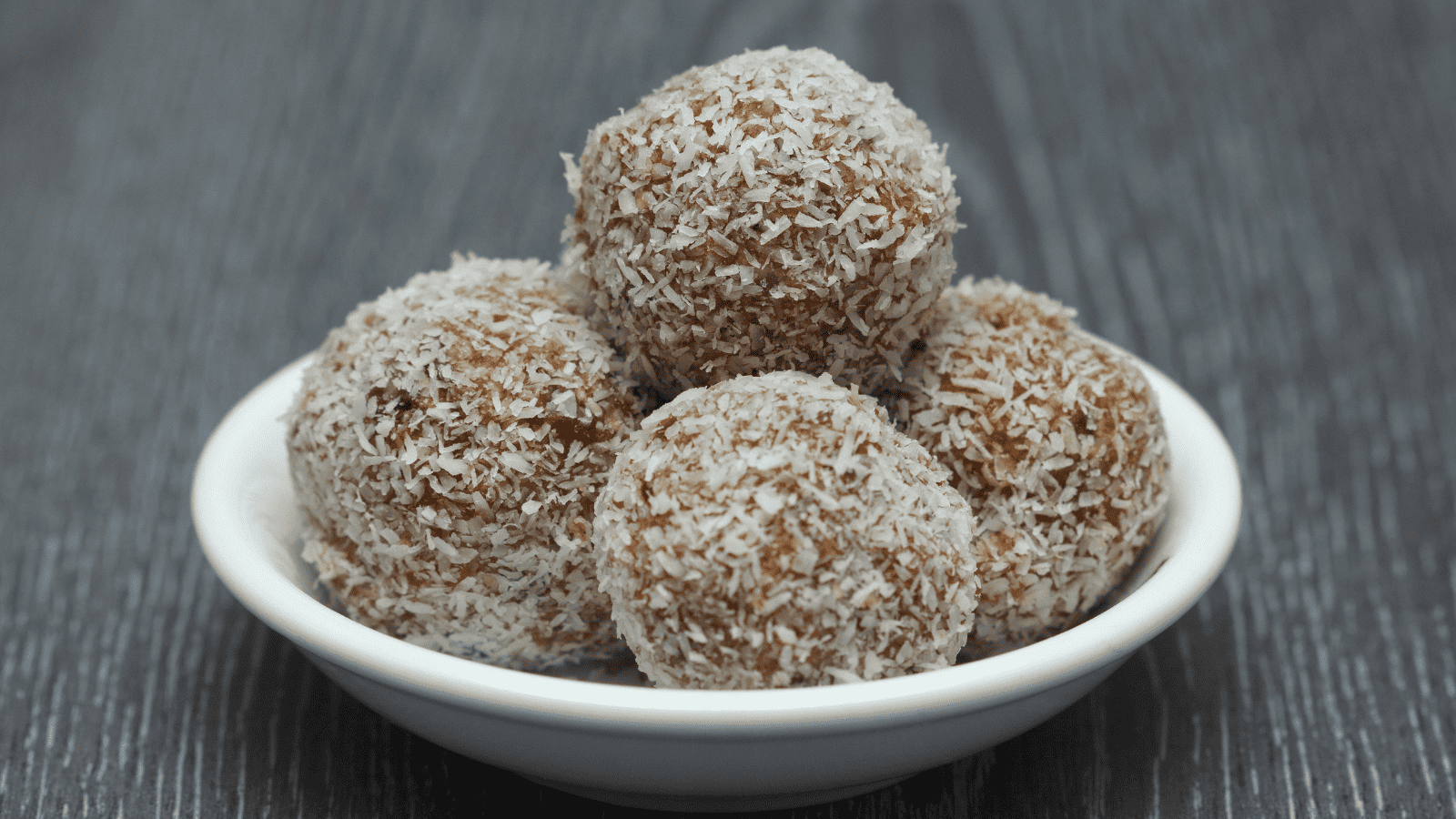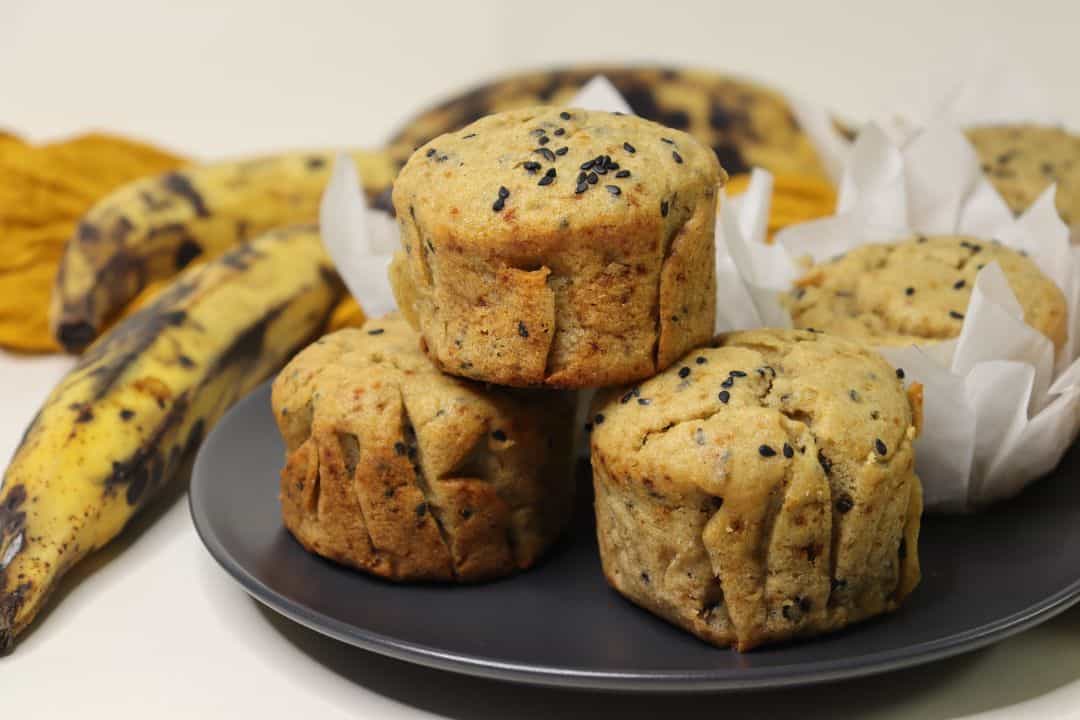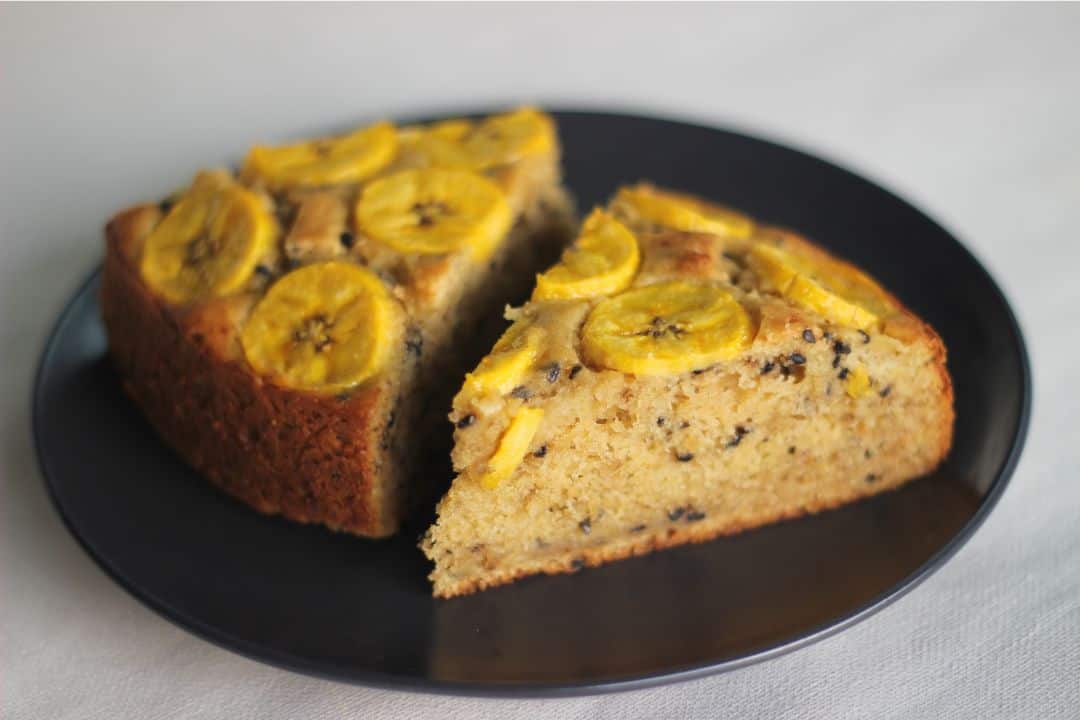Can You Freeze Plantains? Tips on How to Preserve
Can you freeze plantains? It’s a common question for those familiar with this delicious fruit, often mistaken for its close relatives, regular bananas.
Popular in parts of the world, like Southeast Asia, these starchy fruits have cemented their place in various cuisines, presenting myriad dishes to tantalize the palate.
There’s a lot to explore, from sweet, ripe plantains to the starchy texture of green plantain. But what if you have a bag of plantains from the grocery store and can’t consume them immediately?
The excellent news is freezing plantains is a feasible option.

Cooking Frozen Plantains: When you’re ready to enjoy this starchy delight, there are various ways to prepare them. One of the most delicious ways is frying—heat olive oil in a greased pan over medium to high heat.

Add the frozen plantain slices directly into the hot oil. Cook until they turn golden brown, then remove and drain the excess oil using paper towels. They can also be air-fried for a healthier alternative.
If you have an air fryer, it’s similar to making french fries. The only thing to remember is to adjust the cooking time, as frozen plantains may take longer.
For those who prefer mashed plantain, thaw them in a bowl of warm water, then proceed with your favorite way of mashing, whether with a little olive oil or other ingredients. This makes a great side dish to any main meal.
Picking and Storing the Best Plantains
Choose the Right Plantains: When at the grocery store, opt for yellow plantains, which are ripe but not overly so. These sweet plantains have a starchy texture, akin to sweet potatoes, making them ideal for freezing.
Avoid exposing plantains to direct sunlight for prolonged periods, as they ripen unevenly.
Health and Nutritional Benefits: Plantains are not just a tasty treat; they’re also packed with health benefits. They contain less sugar than regular bananas and have been linked to benefits like reduced risk of colon cancer.
They’re a type of fruit that can be a main dish, a side, or even a dessert when cooked differently. Whether fried, boiled, or roasted, the cooking methods vary, but the delicious outcome remains consistent.
Store unripe plantains in a cool, dry place: If you have purchased unripe green plantains, keep them in a cool and dry spot until they ripen. Once the overripe or unripe plantains reach the desired ripeness, you can freeze them.
Avoid refrigerating plantains: Refrigeration can negatively impact the flavor and texture of plantains. It’s best to avoid storing overripe plantains in the refrigerator if you plan to freeze them later.
By following these guidelines, you can ensure that your frozen plantains retain their delicious flavor and quality. Whether you prefer using cooked or raw plantains, this preservation method allows you to enjoy this tropical fruit whenever desired.
So go ahead and stock up on fresh yellow or sweet black plantains when they are available. Freeze them at their peak ripeness to savor their unique taste even when out of season.
From making tasty fried snacks like plantain chips to adding a delightful twist to your favorite recipes, frozen plantains offer endless possibilities for culinary exploration.
Freezing Unripe Plantains: Guidelines and Tips

Peel the unripe plantains to prevent discoloration. Cut them into desired shapes or slices before placing them in freezer bags or containers. Blanching the plantain slices before freezing can help maintain their quality during storage. Ensure you label each package with the freezing date to keep track of freshness.
- Peel unripe plantains to prevent discoloration.
- Cut into desired shapes or slices before freezing.
- Blanch the plantain slices before freezing for better quality.
- Label each package with the date of freezing.
Following these guidelines, you can successfully freeze unripe plantains and preserve them for future use. Whether you plan on using them for cooking or baking, frozen unripe plantains can be a convenient ingredient to have on hand.
Remember that unripe plantains should be stored at room temperature until they ripen. Once they reach the desired level of ripeness, you can freeze them using the steps outlined above.
Enjoy the convenience of having frozen plantains readily available whenever you need them!
Freezing Ripe Plantains: Slicing and Storage Techniques

Preserving ripe plantains through freezing is a great way to extend their shelf life and have them readily available for later use. Following these simple techniques ensures that your plantain slices remain fresh and delicious even after being frozen.
- Slice ripe plantains before freezing them: To make it easier to use the frozen plantains later on, it’s best to slice them before freezing. Using a sharp knife, carefully cut the plantains into desired thicknesses.
- Lay sliced ripe plantain pieces on a baking sheet lined with parchment paper. Before transferring the slices to the freezer, arrange them in a single layer on a baking sheet lined with parchment paper. This prevents the pieces from sticking together during freezing.
- Transfer the sliced ripe plantain pieces into freezer bags or airtight containers: Once the slices are frozen solid, transfer them into freezer bags or airtight containers for long-term storage. This helps protect them from freezer burn and keeps them fresh.
- Remove excess air from freezer bags: When placing the sliced plantains in freezer bags, remove any excess air before sealing. This helps prevent freezer burn and maintains the quality of the frozen slices.
Following these slicing and storage techniques, you can effectively freeze your ripe plantain slices while preserving their taste and texture. Whether you plan to use them in recipes or enjoy them as snacks, having frozen plantain slices on hand is convenient and practical.

Apricot Cashew and Coconut Bites for a Diabetes Friendly Snack
Equipment
- Food processor
- Mixing bowl
- Measuring cups and spoons
- Spatula
- Baking paper or parchment paper
- Airtight container for storage
Ingredients
- 1 cup dried apricots (unsulphured)
- 1 cup raw cashews
- ½ cup unsweetened shredded coconut
- 2 tbsp chia seeds
- 1 tbsp vanilla extract
- A pinch of salt
- 2-3 tbsp water or as needed
Instructions
Preparation
- Lay a piece of baking paper or parchment paper on a tray or flat surface where the bites will be set to refrigerate.
Processing Cashews
- In the food processor, add the cashews. Pulse until the cashews are broken down into small pieces but not completely powdered.
Adding Apricots
- Add to the processor, and add dried apricots. Process until the apricots and cashews are well combined and form a sticky mixture.
Mixing in Remaining Ingredients
- Transfer the apricot and cashew mixture to a mixing bowl. Add the shredded coconut, chia seeds, vanilla extract, and a pinch of salt. Mix well using a spatula. If the mixture seems too dry, add water 1 tablespoon at a time, mixing after each addition, until the mixture is moldable but not overly wet.
Forming the Bites
- Using your hands, take a small amount of the mixture and roll it into a ball. Place the formed ball on the prepared tray. Continue this process until all the mixture is used up.
Refrigeration
- Place the tray in the refrigerator for at least 2 hours or until the bites are firm.
Storage
- Once firm, transfer the bites to an airtight container and store in the refrigerator.
Notes
- These bites are naturally sweetened by apricots, making them a good snack option for those with diabetes. However, always consume in moderation and monitor blood sugar levels.
- You can customize the recipe by adding or replacing ingredients. For instance, flaxseeds can be used in place of chia seeds.
- These bites can be stored in the refrigerator for up to a week. They can also be stored in the freezer and enjoyed as a frozen treat if you prefer a firmer texture.
Nutrition
Thawing and cooking frozen plantains can be convenient ways to enjoy this versatile fruit. Here are some tips on how to preserve and cook with firm plantains:
Thawing Methods:
- Let the frozen plantain slices sit at room temperature until they thaw completely.
- Alternatively, use the defrost setting on your microwave to thaw them quickly.
Using Thawed Plantain Slices:
- Once thawed, you can use the slices in recipes that call for cooked or mashed bananas/plantains.
- Try incorporating them into cakes, pancakes, bread, or desserts for a unique twist.
Directly Adding to Dishes:
- If you’re short on time, frozen plantains can be added directly to soups, stews, or stir-fries without thawing.
- Their texture may slightly differ from fresh ones but still add flavor and substance to your dishes.
Adjusting Cooking Times:
- Keep in mind that when using frozen plantains, they may require slightly more extended cooking periods compared to fresh ones.
- Monitor their texture and adjust cooking times accordingly.
Following these simple guidelines, you can make the most of your frozen plantains without compromising their taste or quality. Whether you thaw them before cooking or directly incorporate them into dishes, firm plantains offer a convenient option for adding a tropical touch to your meals.
Now that you know how to handle frozen plantains, let’s dive into some delicious recipes to put these preserved fruits to good use!
Utilizing Frozen Plantains: Creative Culinary Applications
Make Delicious Plantain Chips
- Slice frozen plantains thinly and fry them until crispy.
- Enjoy these homemade plantain chips as a tasty snack, or serve them as an appetizer at your next gathering.
Blend Into Creamy Smoothies

- Add frozen plantain slices to your favorite smoothie recipes for a creamy and nutritious twist.
- The natural sweetness of the plantains will enhance the flavor of your smoothies while providing added nutrients.
Bake Moist and Flavorful Treats

- Thaw frozen plantains, mash them, and incorporate them into baked goods like cakes, muffins, or cookies.
- The mashed plantains add moisture and a unique flavor to your favorite treats.
Create Unique Desserts
- Experiment with fried ice cream by caramelizing slices of frozen plantains before adding them to the dish.
- Combining crispy caramelized plantains with creamy ice cream creates a delightful dessert experience.
By freezing plantains, you unlock their versatility as an ingredient in various dishes. From savory snacks to sweet desserts, here are some creative culinary applications for using frozen plantains:
- Make delicious plantain chips by slicing frozen plantains thinly and frying them until crispy. These homemade chips can be enjoyed independently or served as an appetizer at gatherings.

- Blend frozen plantain slices into smoothies for a creamy and nutritious twist. The natural sweetness of the fruit enhances the flavors of your favorite smoothie recipes while providing added nutrients.

- Incorporate thawed frozen mashed plantains into baked goods such as cakes, muffins, or cookies. The mashed plantains add moisture and unique flavor profiles to these treats.

- Get creative with desserts using caramelized frozen plantain slices in dishes like fried ice cream. Combining crispy caramelized plantains and creamy ice cream creates a delightful and unique dessert experience.
With frozen plantains, you have a versatile ingredient that can be used in various recipes. From crispy snacks to moist baked goods and indulgent desserts, explore the possibilities of utilizing frozen plantains in your culinary adventures.
Mastering the Art of Freezing and Preserving Plantains
Congratulations! You’ve now learned the ins and outs of freezing and preserving plantains. With these techniques, you can extend the shelf life of your favorite fruit and enjoy its deliciousness all year round.
Whether you have unripe or ripe plantains, you can freeze them properly to maintain their flavor and texture.
Now, it’s time to put your newfound knowledge into action. Take those perfectly picked plantains, slice them up, and store them in your freezer for future culinary adventures.
The possibilities are endless, from savory dishes like plantain chips or tostones to sweet treats like fried plantain cakes or banana bread!
So grab some plantains, freeze them using our shared tips, and let your creativity run wild in the kitchen. Your taste buds will thank you!
FAQs – Can You Freeze Plantains?
Can I freeze overripe plantains?
Yes, you can freeze overripe plantains. They may not be suitable for eating, but they can still be used in recipes that call for mashed or pureed bananas.
Peel the overripe plantains, place them in a freezer-safe container or bag, and store them in the freezer until ready to use.
How long can I keep frozen plantains?
👉 Frozen plantains can be stored for up to 6 months without significantly losing quality. However, consuming them within 3-4 months is best for optimal taste and texture.
Can I freeze cooked plantains?
👉 Yes, you can freeze cooked plantains. Allow them to cool completely before placing them in a freezer-safe container or bag. When reheating frozen cooked plantains, methods such as baking or frying rather than microwaving are recommended for better results.
Are frozen plantains as good as fresh ones?
👉 While frozen plantains may not have the same texture as fresh ones, they can still be delicious and versatile. Freezing helps preserve their flavor, making them a convenient option for various recipes.
Can I freeze plantains with the peel on?
👉 It’s best to peel plantains before freezing them. The peel can become tough to remove once frozen, so peeling them beforehand is easier.

Born and raised in a family of foodies, Georgia’s passion for cuisine was nurtured from a young age as she learned the intricacies of flavor and texture from her grandmother’s kitchen. As an adult, this early fascination blossomed into a full-fledged love affair with the culinary world.







